I was young and gay, when Channel 4 uploaded their entire back catalogue to its online catch-up service, 4OD, in 2006. My family had just gotten internet that didn’t use the phone line so I could watch shows without being interrupted by a phone call from a relative. I flicked through the large number of shows Channel 4 had produced since it was founded in 1982 and one show in particular caught my eye. The small thumbnail image had three white men, all with hair neatly styled, and they had their arms around each other in a way I’d never seen men do before. I put my headphones in, so no one would know what I was watching, and pressed play. The show started with orange lights, something like streetlights through a wet windscreen, and the guitar music started, then the title; Queer as Folk.
After the titles, Vince (played by Craig Kelly) sits in front of a yellow screen in a talking heads interview style that reminded me of Sex and the City (in the early days, at least, before they scrapped the interview angle. I’d just begun that journey that would ignite my life long love of Sarah Jessica Parker and would lead me to tell everyone I know that ‘I’m a Carrie’). Vince is talking about going clubbing and suddenly I realised he was talking about going to gay bars, and there were images of men falling out of clubs, in tight shiny tops (in was the nineties). There were men kissing, men talking about going home with other men, and ‘wanking them off’ in doorways. I paused it and placed my laptop away from me on my bed. I knew I was gay at that age, it was around year eight and I’d even told a few people. Granted, I’d told them I was bisexual in the hope that, if they didn’t like it, I could claim it was a phase and I could go back to being hetero if I needed to (I apologise to all the bisexuals I have met and will meet for doing that, because when I did co
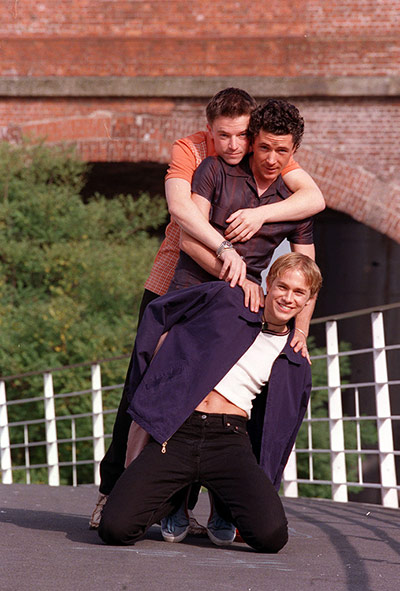
me out as gay later on I imagine that only helped perpetuate the idea, to my friends, that bisexual is a rest stop on the way to homosexual). Yet, even though people knew I li
ked the look of boys, and I’d had my first teenage crush, I wasn’t sure I was ready to be fully submerged into the world of Queer as Folk. These men were all a lot older than me, and I wasn’t really sure if our opinions or experiences would overlap. When I looked back down at the screen, about to turn it off, I saw that it was paused on the image of a young man, his light blonde hair not too dissimilar to mine at
the time. The look of confusion and puzzlement matched mine too.
Nathan (played by Charlie Hunnam) is a fifteen-year-old gay high school kid who’d ventured out to Canal Street, in Manchester, in hopes of finding out what being gay is all about. He goes home with Stuart (played by Aiden Gillian) who is, for all intents and purposes, the king of Canal Street.
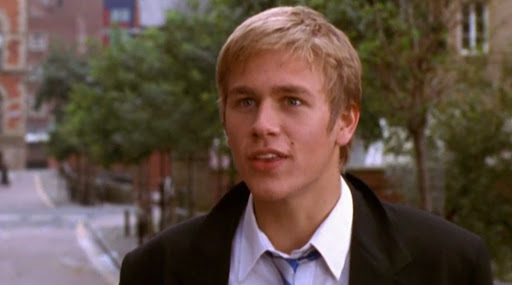
As the series went on Nathan became more open with his sexuality and his infatuation with Stuart continued. I knew that Nathan was very different from me, that all these men were, and the real thing we shared in common was our sexuality and the buck stopped there. Nathan was a sexual teenager and I wasn’t, and within the first ten minutes of the first episode it was clear to me then that this show was about sex. Vince is followed home by a muscled man who wants to ‘shag’ him and Stuart and Nathan are completely naked and riding each other by the 8:29 mark. Queer as Folk was revolutionary in that regard. When it finished its run in 2000 it would still be another three years before that famous Coronation Street kiss between Todd and Nick. That’s why Queer As Folk was so relevant because it put gay sex on TV and that was so important. A central criticism of the gay lifestyle is the sex life, used by conservatives for years as something unknown and sordid, but Queer as Folk demystified it. They made it something that, if you wanted to, you could engage with. Obviously it wasn’t easy to do in 1999, nor was it easy to get people, i.e. the straight mainstream media, to support it.
Lynda Lee-Potter of the Daily Mail wrote ‘This is the first time I’ve ever seen explicit homosexual sex on television and my main emotion is intense sadness that actors are being exploited in this way.’
While Tony Purcell at The Mirror said, ‘Call me old fashioned but I think sex is best carried out in private between two consulting adults of the opposite sex.’ He added, ‘Viewers all over the country must have been squirming with embarrassment or reaching for the remote control.’
Gary Bushnell at The Sun didn’t like it either (is anyone surprised by that?). He said ‘Who needs to repeal Clause 28 [a cause that banned the ‘promotion’ of homosexuality in schools] when C4 are there to pump out dross like Queer as Folk II?’
Yet, the show has remained relevant and, for a long period of time, was an entry point into queer culture for a lot of young gay men. It’s been seventeen years since the show finished, but for a long time there wasn’t really anything else gay men could find or associate with. It wasn’t until later that shows like Glee would be become mainstream. As a side note, I imagine, for a lot of gay kids born in the nineties, it was also a sexual awakening for those who couldn’t get their hands on gay porn (because I’ll admit, here and now, that I masturbated to it a fair few times).
*
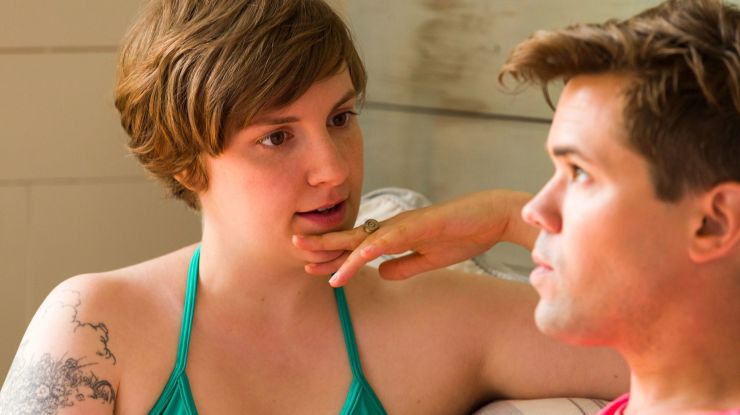
I am one of those people that never gave up on GIRLS, Lena Dunham’s HBO brainchild. It began in 2012 and followed the lives for four girls: Hannah, Marnie, Jessa, and Shoshanna. The series has earned a lot of praise, and a lot of criticism, over the years. It’s been called ground-breaking and revolutionary but also been called too white, too millennial, and too self-absorbed. It’s basically been called ‘too’ everything. However, there is some praise I think GIRLS deserves, but rarely gets, and that is to do with the shows gay character, Elijah Krantz, played expertly by Andrew Rannells.
Elijah appears for the first time in the third episode of the first season, All Adventurous Women Do. The episode saw Hannah (Dunham) find out she has HPV and her current ‘boyfriend’, Adam, insists he didn’t give it to her. She is advised to call her all her previous sexual partners, a courtesy of the STI world, and she ends up in a bar sat across from her college boyfriend; Elijah. He thinks Hannah asked him here because she’s heard that he’s openly gay now. The scene, masterfully played by Dunham and Rannells, is a highlight of the first season and ends with the perfectly quotable line: ‘It was nice to see you. Your Dad is gay.’
Elijah appeared briefly in a flashback during episode five and had some scenes with Marnie in episode six. But when he returned in the season finale it seemed like Elijah would be around for good, as he decided to move in with Hannah. Sure enough, as season two began Elijah was living with Hannah and was now firmly apart of this show. As the seasons progressed Elijah came in and out of the girls lives until later on, when he once again ended up living with Hannah and became her main sounding board. He had his own romantic story line (with Corey Stoll from House of Cards) and, as the other girls did, he began to grow into adulthood (even if that growth is somewhat stunted).
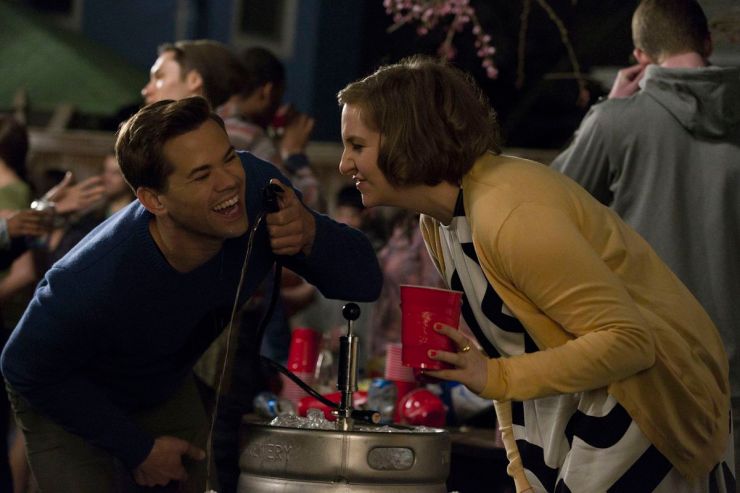
During their farewell season Dunham and her producing partner, Jenni Konner, gave Elijah an episode to shine. The Bounce saw Elijah audition for ‘White Men Can’t Jump: The Musical’ and utilised Rannells’ Broadway chops. After the episode ended there were calls online for an Elijah centric spin-off. But why did Elijah resonate with people in such a way that they’d call for a spin-off? Partly, it’s Andrew Rannells just being so fucking likeable, but also it’s down to the way his character is written. He’s funny, snarky, selfish, rude, bitter, vulnerable, difficult, crass, and kind. He was a fully rounded gay character in a mainstream show that didn’t rely overtly on stereotypes and expertly subverted the ‘gay best friend’ image.
On a personal note, it was nice to see this fully rounded gay character interacting with women in the way I had most of my life. I’ve often had, primarily, female friends and to see that bond between Hannah and Elijah felt very particular, it was something I recognised.
There was another reason GIRLS resonated with me so much. I identify with the female experience more than I do with the male experience, at least when it comes to film and television. This isn’t to say that being male hasn’t allowed me certain privileges, because of course it has. But, if I were to list characters I thought were closest to myself they would all be exclusively female. I have never been able to really see myself in Entourage, or The Inbetweeners, or as the male lead in any show, ever. But, I have felt strong connections to Carrie Bradshaw, Hannah Horvath, any character Greta Gerwig plays, Princess Leia, Rachel Green, and many more.
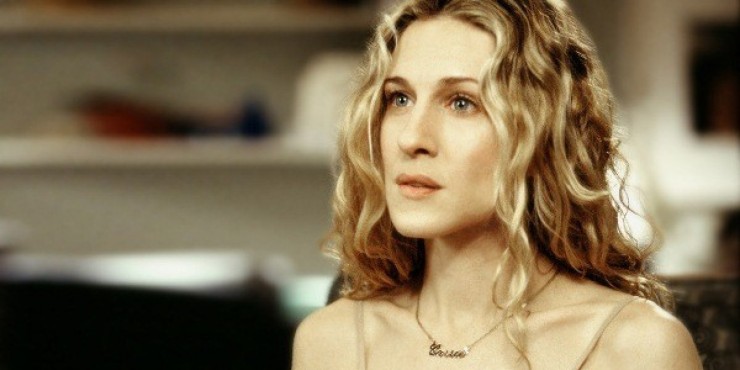
*
Looking came into my life when I was much more certain of myself. The show premiered in 2014, during my first year of University. Since Queer as Folk, and its American remake (which I’ve never seen), there wasn’t much in the way of shows aimed at gay viewers. Queer as Folk was only on the air for two years in the UK, Queer as Folk US ended in 2005, and Will & Grace ended in 2006 (which has its own problems in terms of representation). There was Glee, which was important in so many ways, but that show was a musical and wasn’t solely about what it’s like to be gay.
After GIRLS premiered people, especially young people, were looking for representation of themselves and two years later Andrew Haigh gave gay men Looking. Initially hailed as the ‘gay version’ of Sex and the City or GIRLS the show quickly established itself as something vastly different. If people, consider GIRLS the next step from Sex and the City then that’s what I’d say Looking was to Queer as Folk.
Though it dealt with sex, it felt less idealistic or fantastical. It felt more grounded and real and it was willing to discuss the ramifications of sex. It also allowed the men not to be overtly sexual all the time. It allowed them to feel unsexy or awkward. The men on this show didn’t all have the sexual prowess of Stuart, they didn’t all have bodies like Nathan, and, yet, they weren’t considered sad, like Vince, if they didn’t have those things. They were real people who each had their own goals, ideas, diverse bodies and ethnicities, and varying views on what it meant to be gay.
Like Queer as Folk, Looking had three central characters: Patrick (Jonathan Groff), Dom (Murray Bartlett), and Agustín (Frankie J. Alvarez). The three of them lived in San Francisco and we watched them navigate their lives as gay men in the modern world. There was casual sex, monogamy, and romance. We saw their work life and social life. We saw it all. They were the closest television has come to showing the modern (western) gay experience.
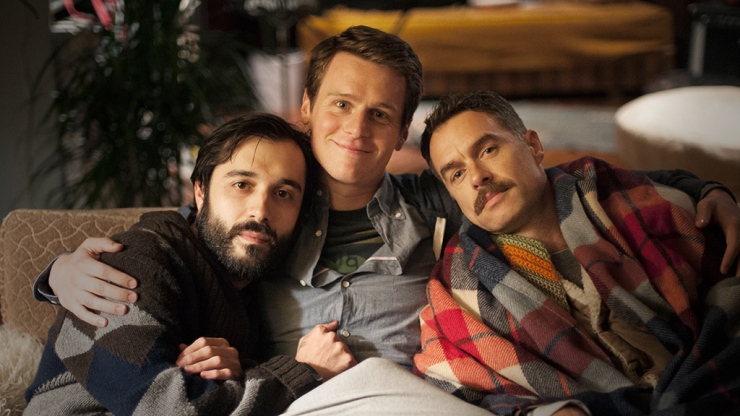
Patrick seemed the most like me. He was awkward, and shy, but funny and sometimes felt sexy. He had family issues, and dating issues, and all the issues I had. His love triangle between sweet barber Richie (Raúl Castillo) and his british boss Kevin (Russell Tovey) did feel like something out of Sex and the City (I am, and always will be, Team Richie). It was the first time I’d really seen romance between men be taken seriously and that was huge for me! But I still couldn’t entirely connected to Patick for one, possibly superfical, reason; his body. Sure, his body wasn’t as ripped or defined as Stuart or Nathan, but he was certainly less wide than me. The idea of the perfect body for gay man is one perpetuated constantly. Looking showed a diverse range of bodies and this isn’t a criticism of the show. It’s just one reason I couldn’t relate to him.
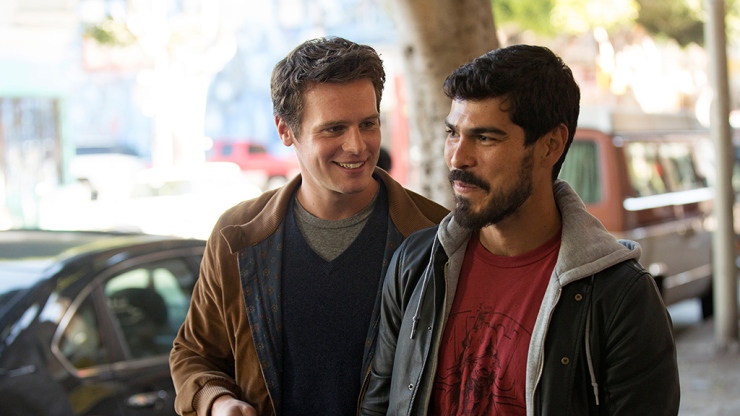
That being said, the show is one of my personal favourites, and I revisit it often because it was unfortunately cancelled after season two (though, HBO allowed Andrew Haigh to create a feature length finale).
*
I still don’t feel like I’ve ever seen myself on TV. I suppose somewhere between Patrick and Elijah is where I’d place myself; I can be selfish, often unsexual or flat out unsexy and I can be kind but also an asshole.
When I began thinking about LGBT representation these three shows came to mind and I thought I must be in there somewhere and I searched and I searched for me. Then I thought, fuck that. I am not in there and I shouldn’t have to be.
In 2015, 4% of characters scheduled to appear on TV identified as LGBT. That means straight people have the other 96% to find themselves in, while I’m looking in 4%. But, who am I to complain? In 2014, 73.1% of roles in films were played by white people. Though TV is more diverse, racially, than film it still means, that if a black gay man or an Asian gay man was looking for someone like them, they’re also looking in that 4% but it’s unlikely they’ll find anyone who even looks like them, let alone acts like them. There have been some positive strides on American network TV with Grey’s Anatomy, How to Get Away With Murder, and basically anything Shonda Rhymes creates but it still isn’t enough.
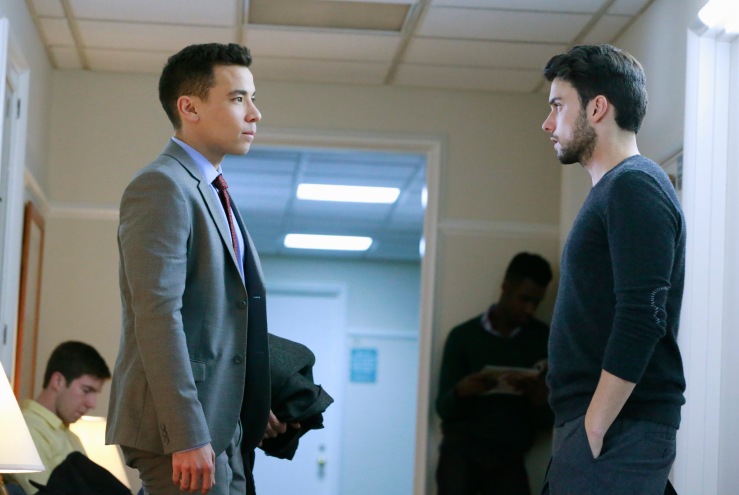
In 2015 Vulture reported a series of comments, comedian and creator of Master of None, Aziz Ansari made about the state of representation in TV and ‘racial quotas’. He said ‘There would never be two Indian people in one show. With Asian people, there can be one, but there can’t be two. Black people, there can be two, but there can’t be three because then it becomes a black show. Gay people there can be two, women there can be two, but Asian people, Indian people, there can be one but there can’t be two.’
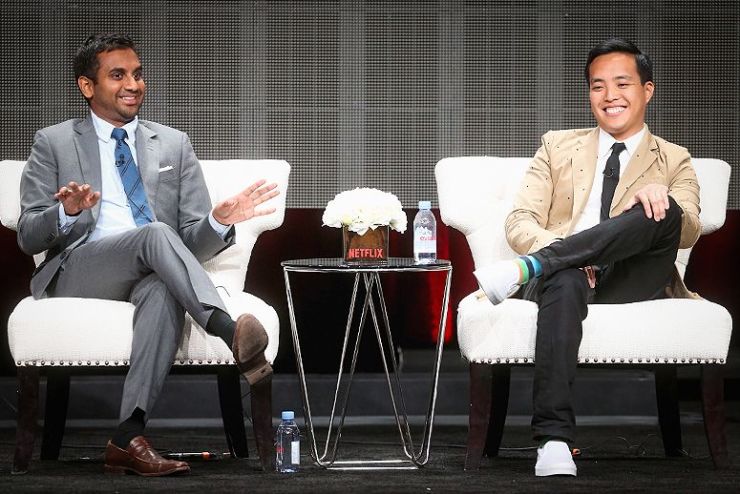
In 2013 the Guardian reported that just 1.5% of people in the UK identify as gay, lesbian, or bisexual. Stonewall estimates it’s somewhere between 5-7%. I believe, that having more gay people on TV will effect that number. If you think, recently, of Barry Manilow or Ricky Martin, two men who came out later in life. They might not have said they were gay in a poll like that. All the men and women who were never allowed to express their sexuality wouldn’t say they were gay on a poll like that. The Black, Latino, or Asian people or people living with disabilities who have never seen a gay version (or sometimes any version) of themselves on TV, who live in communities, or countries, that criminalise or denounce homosexuality, or those who come from religious backgrounds, might not identify as gay in these polls. But we, myself included, shouldn’t have to be looking in that 4%. And maybe, if there was more than 4% we could see more people coming to terms with their sexuality. That’s why we need it. Did I just uncover the gay agenda? If I did it sounds like the most positive thing I’ve heard of. Think about, if people saw versions of themselves on TV or in film that were living lives that were like their own and they weren’t depressed, or being victimised or abused (though Queer as Folk did examine homophobia, on the most part Looking and GIRLS did not) then that could be a major stride towards acceptance.
The fact is, representation matters to the LGBT community. So many people who identify as queer do not have the support system or the education they need to know they’re not alone. Seeing LGBT people on TV and in films is important in normalising it. And, right now, at this moment in time, I don’t care if it normalises it for the right-wing conservatives, they can call Ofcom as many times as they like. I care that it normalises it for the gay kid who might not have a supportive family, or anyone to turn to at all, who finds Queer as Folk, or GIRLS, or Looking, online and they can see that they are not alone. They can find any new shows that, hopefully, will come along exploring gay life. They’ll find there are spaces out there for them and there is, most importantly, a chance to live their life the way they want to.

Leave a comment